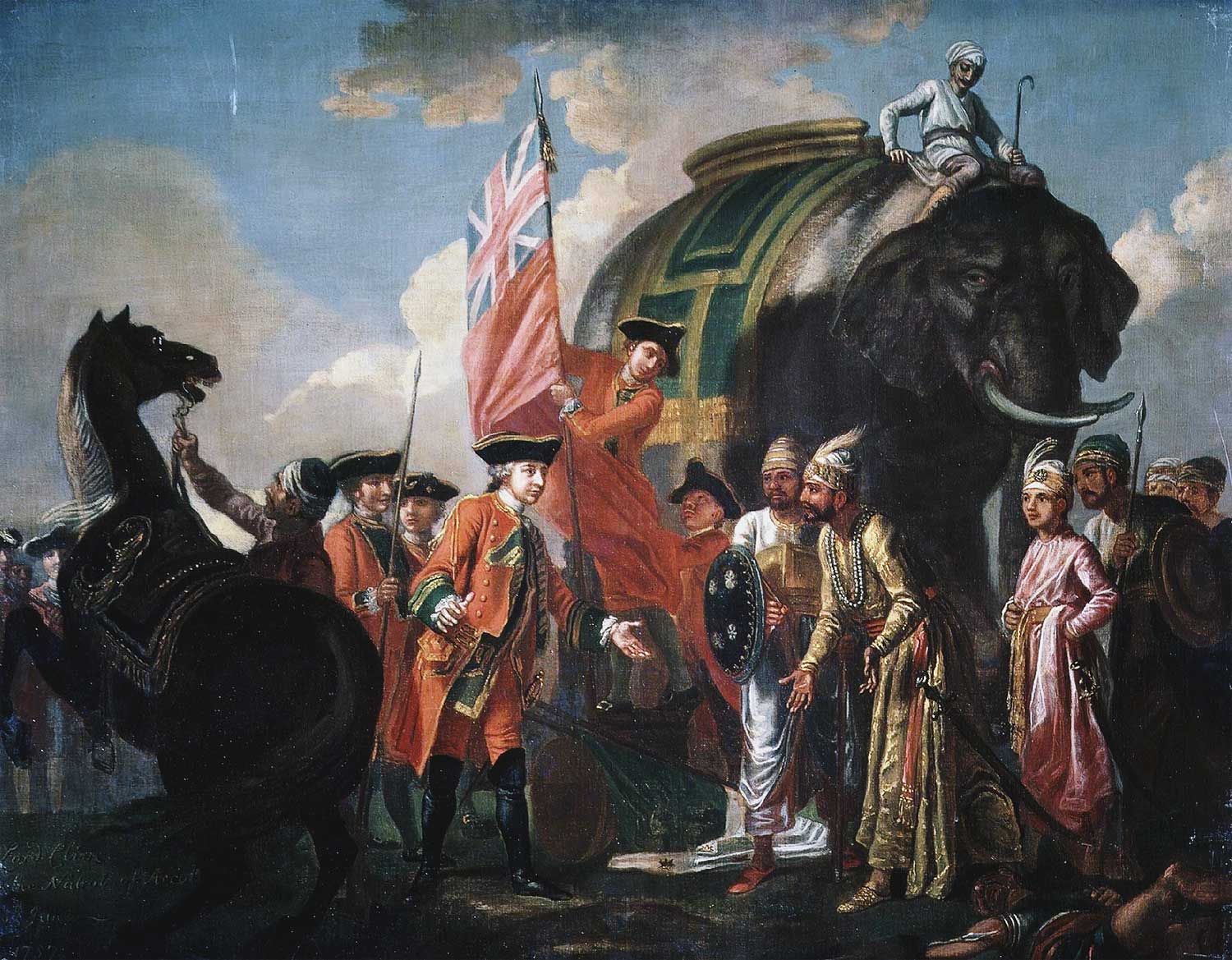In Kolkata, Remembering Sister Alphonse’s History Class
Walking about Calcutta — Kolkata — I remembered Sister Alphonse’s history classes in school. I couldn’t help my mind doing its bit of wandering as well.

Sister Alphonse was beautiful. I can tell you that, although I never saw her hair. I knew her in Bellary during 1970 and 1971, a time when a woman wasn't much thereabouts if her tresses didn't knock about her knees.
"This book is rubbish," Sister Alphonse said and collected from the class the government-prescribed history textbook we had bought, and for a little extra, she placed an order for a replacement on our behalf. "Here's a proper account of Lord Bentinck," she said. "He abolished sati." She spent a whole class describing the Black Hole of Calcutta, and the hapless Sirajuddaula — she seared a dark idea of the man into my twelve-year-old brain. She soaked the shame I felt in the balmy story of Robert Clive.
I went to Calcutta the first time during December last. I spent a few minutes before the obelisk that is the British-built monument to preserve the memory of the British dead in the Black Hole of Calcutta. The men had been crammed (by their account) into an enclosure the night after Sirajuddaula ordered the British out from Calcutta fort. A good number of them died by morning; estimates vary from 43 to a peak claim of 123. Whatever the number, the redcoats managed to whip up support in Britain for military operations in a place they'd come to do trade in.
Sister Alphonse was Scottish. Bellary used to have a British military cantonment, so it followed that the town had sprawling Christian schools. I went first to St. Philomena's, where Sister Alphonse taught history, and art and craft. After Philomena's, I went to St. John's.
The Black Hole Monument is no more upon the Black Hole, which hole was actually a guardroom that the British razed along with the fort it was in. After they'd disposed of Sirajuddaula, they built an elaborate new defence and called it Fort William, and moved the monument around from time to time. It rests now in the quiet compound of St. John's Church, the construction of which church began in 1784 under Governor-General Hastings. It was opened for Service in 1787 by Lord Cornwallis, the general who had earlier surrendered to George Washington in America. In India, Cornwallis would vanquish "tiger" Tipu Sultan and very nearly complete the colonization of the subcontinent.
After they killed Tipu, the British installed a boy king in his place and gave him powers over Education and Culture and Revenue Collection. They allowed him a harem.
Sirajuddaula was a hot-headed 22 at the time of the Black Hole. He'd been incensed at the British who'd been raising fortifications where his forebears had permitted them mere warehousing. He ordered them to stop, but they kept up the works, so Sirajuddaula attacked. This was in 1756, and the British launched a reprisal in 1757. They'd mustered a mere 3000-man force against Sirajuddaula's 50,000, but that didn't matter. They bought Sirajuddaula's generals so that in the battle at Plassey there happened no real battle at all. Sirajuddaula was eventually executed.
"India was colonized not by Britain," William Dalrymple has begun to insist. His book that argues the case will be out this year, but excerpts from it have been circulating in print media: "India was colonized by a corporation, The East India Company. And, along with British businessmen and aristocrats, Indian Marwaris were eager shareholders in the company."
Dalrymple is a Scot. Beneath a picture shot by him and posted on Instagram, of a place in Bengal, he says female Hindu blood has entered his bloodline at a point. Dalrymple is big, robust. Hair that's thinned on top is luxurious on his cheek and chin, and the colour of wisdom has erupted in thick lines along its length. He has the accent and the scholarship, and, man, how he lets loose his grin! He looks so like Sean Connery!
My father was nineteen when India became free. In Kollegal where he was raised, a forest town in thick jungle country, there used to be stationed a lone white man, a Forest Officer. "That man saw an ox once," my father used to tell me, "and he asked for its tongue. They killed the whole handsome ox for it." It's only so much that my father experienced the English, and only by the ear. An aloof guy, he didn't belong with the nationalists; and he was never with those that argue that British times were the best. The government department he worked in retains the name given it in colonial times: The Department of Public Instruction.
I was born in Mysore, not far from where "tiger" Tipu ruled from and died in.
In 1999, some folks tried to organize the two-hundredth-year commemoration of Tipu's fall. It didn't happen. Tipu was a Muslim. Also, there was an attempt a year before to mark the five-hundred-year-old landing of Vasco da Gama in Calicut in South India. That event didn't materialize either. It was the Portuguese explorer's discovery of the sea route that commenced colonization in these parts. Not many feel grateful for that, history and heritage be damned.
The admiral who took Robert Clive from Chennai to Calcutta to mount the attack on Sirajuddaula died four months after the battle. Whereas Clive lived to loot rich Bengal which in those days financed the dying Mughal empire. Clive took Oudh next, and afterwards the Mughal himself. The Englishman got very rich, but he killed himself in the end. He never got to be glamorous at home among his folks, although later they installed tall statues of him. I've seen the monument to him that looks to St. James Park. I felt diminished before it; my self-esteem drained away from me.
Sister Alphonse came from a well-off family, I think. I bumped into her once at the district maidan, where she was roaming with a compact video camera, the olden type that recorded on film. She was a radiant presence in the haze, crisp and fresh, in her ever-spotless ever-creaseless habit.
"Step back, Shashi. Step back. Now walk toward me," she kept saying until she had me walking as she wanted. Then she filmed me.
My mother was ever unhappy because she could never afford a drawing-room like in the Woman & Home magazine that came from England, which she borrowed from a private library.
The other day, I attended "Dinner with Dalrymple" in Bangalore. "And for whom must I sign this?" Dalrymple asked when I took a copy of his Kohinoor up to him. I'd been seventh in line. He wrote my name in a flourish on top of the page and signed himself across the diagonal. The lines are blue and thick, rather like brush strokes.
It is said of Clive, that when he marched, he used to have only a small contingent with him. Bystanders en route would outnumber his force in multiples, and they could've done in the firangi army on any of those occasions. But then, imagine on those plains a white man, wearing red with gold trims, riding a magnificent horse.
There's a question that never came up in class, nor does it appear in anything I've read. At what point in history did we get so filthy? How came we to surround ourselves with this omnipresent squalor, and stink?
"Why, Shashi has done something nice for a change!" Sister Alphonse exclaimed one morning in class. I'd drawn a pattern with felt pens, in red and blue. It must've looked good from her distance on stage, but the given task was to work with brushes. I don't remember the punishment, but she got really cross with me that day.
Calcutta was built in the fashion of London. It was the city of palaces, rich in architecture, rich in culture — Indian and European. I walked around Dalhousie Square, taking in the enormous, decayed, cable-riddled Victorian, Edwardian buildings from which India was ruled. Afternoon, I walked to Park Street, went down it to the landmark for tea, and toilet. The toilet stank.
Flurys was established in 1927. For twenty years of its lifetime, it has seen English rule and highbrow English custom. Did the toilet stink so back then? Was the tearoom as pink then as now?
If only there were jobs in Calcutta, the educated Calcuttan would never leave the city. That is the claim, and it is untested for a long time because Calcutta has had no jobs on offer for decades now, and her children are flourishing in other places. But I, I want no more a job, and I fancy I'll spend a few days every now and then in Calcutta. I want to sense English rule from out there. I wish, if I can, to add a few words to the fact and fiction that already exist.
I wonder what Sister Alphonse might say to that.
Image: Wikipedia: Oil-on-canvas painting depicting the meeting of Mir Jafar and Robert Clive after the Battle of Plassey by Francis Hayman
